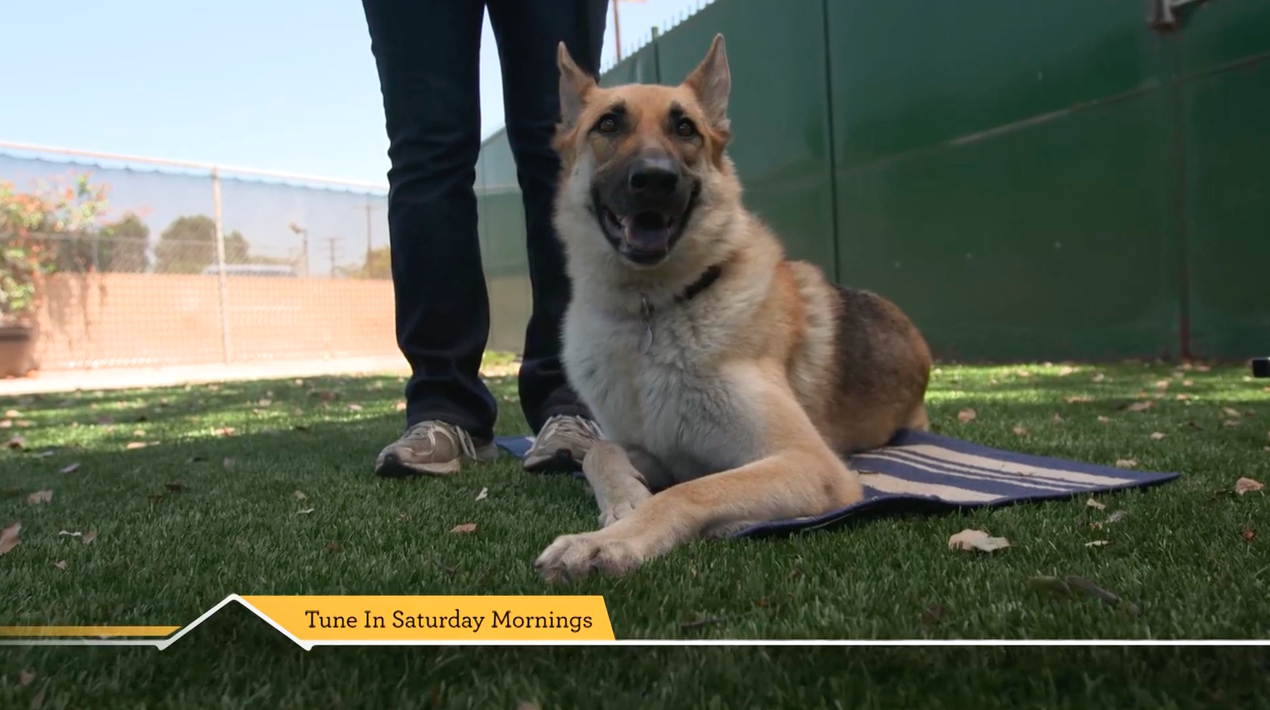How to Teach Your New Rescue Dog to Stay
In this week’s Save Our Shelter episode, Rocky and Rob meet Bethany of German Shepherd Rescue, and she shows us a great training trick to help teach your dog how to stay – for good!
When entering a new training phase, whether your dog is brand new to you or one you’ve been with for awhile, a key to success is setting your pup up to win as often as possible. Keep training sessions short and as fun as possible, and don’t push them swiftly into scenarios that will cause them unease. In many cases, several minute sessions a few times a day will build structure and teach them the best ways to navigate life with you!
Bethany explains that she likes to work in three steps when training a new dog: distance, distraction and duration. A quiet and empty room in your house is an easy place for a dog to learn a new behavior, while a crowded dog park is, obviously, a high distraction environment. It’s important to work on the three D’s in sections and move on to the next once you’ve mastered one.

Distance. First, you want to work on getting them to settle down in one place, like their bed or a mat. Try it somewhere that isn’t distracting to your dog. Then, you slowly start moving away, creating a space where they’re comfortable not being right next to you all of the time. You can do this by staying as close to their head as possible at first to reward them as they maintain their position. If they get up and move, don’t give them a treat and become still for a few seconds. If they don’t correct themselves, start over. It’s important to give them the opportunity to sort out the situation and comply. After a few treats, slow down the speed of reinforcement as you straighten out your position. You can begin to add a verbal queue like “stay,” using that instead of a treat every other time. Eventually, you’ll be able to go anywhere in the house and they’ll have their happy place to hang out in. But first, you have to gradually proceed by moving two steps and so on, working towards being able to turn your back and walk away. Reinforce by heading back to the dog while they are still in position, getting further away in small increments. Creating spaces like this for dogs allows them to feel empowered and safe, and helps prevent things like separation anxiety. Similar techniques are used in crate training, another way to create a haven for your dog that they like being in. These things help them feel secure when you are away. Without them, they might put all of their comfort and stability in you, and feel more unease when you leave the home.
Distraction. Bethany admits that distraction is the hardest part of all of this. She says you have to actually create scenarios of distraction while your dog can lay calmly. You can begin by changing the environment, moving from room to room inside your house with your dog. Notice which places are most distracting to your pup and set them up to win there by going from easiest to hardest room as you train with them. You may need to go back to a higher level of reward and reinforcement in this step. Once they respond well to you throughout your home, you can move outdoors. This is a trickier spot for dogs, as there are so many things to smell and see and bark at! Don’t worry too much about duration here, as duration can often kill the rate of reinforcement while we’re still working on distraction and distance.
Duration. Improve your dog’s ability to “hold” a position for longer periods of time. This will also help in learning to help them “sit” and “stay.” Once they’ve learned to obey commands from a distance and while they might be otherwise distracted, you can lastly work on building up the duration of their focus. Eventually, they’ll be able to focus for longer periods of time no matter the level of distraction and/or distance. These three simple training methods will help in a variety of scenarios and with training a variety of commands, and having them as a base-level learned behavior will create a trainable dog who is responsive to you in different situations.

Now that you’ve learned a bit more about training your German Shepherd and how Bethany likes to go about working with new dogs, you can set out working with your own pup! Remember, patience is key here! You’re playing the long game, and just a little work everyday over time will often yield better results than trying to slam it out hard in a week. Got tips and tricks up your sleeve that we missed here? Be sure to share your favorite winning moments in the comments below.



 Five Reasons Why Donating Dog Food to a Shelter Makes a Difference
Five Reasons Why Donating Dog Food to a Shelter Makes a Difference Adopting 101: Size, Breed, and Energy Levels
Adopting 101: Size, Breed, and Energy Levels 6 Tips for Adopting the Right Match
6 Tips for Adopting the Right Match Save Our Shelter with Cathy Bissell
Save Our Shelter with Cathy Bissell




